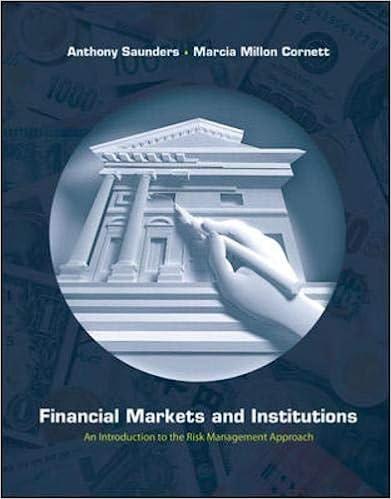Using the forecasted financial statements from integrative Case 10.1 involves projecting financial statements for Walmart for Years 1 through 5. Additionally, using the cost of equity information provided for Case 11.1. In your analysis, incorporate the Free Cash Flow valuations in Integrative Case 12.1. Use the attached for the various Residual Income Valuation of Walmart's Common Equity The attachment shows us the following: 1. Walmart's Share Value Using the Residual Income Valuation Approach 2. Sensitivity Analysis REQUIRED 1. Using these data at the end of 2015, what reasonable range of share values would you have expected for Walmart's common stock? At that time, what was the market price for Walmart shares relative to this range? What would you have recommended? 2. Since you have Walmart's share value using the dividends valuation approach, compare your value estimate from the residual income valuation method provided here. Chapter 13 Valuation: Earnings-Based Approach egrative Case 13.1 Walmart: Residual Income Valuation of Walmart's Common aity This is an extensive integrated case that connects the topics of Chapter 13 to those of Chapters 10-12 using Walmart Stores, Inc. This case also demonstrates the valuation approaches in Chapters 14. Note that these analyses have been prepared using FSAP. The FSAP file containing these analyses is available for download by instructors (not students) from the book's website for instructors. Go to Instructor's resources page at www.cengagebrain.com. In this case, we estimate cost of equity capital for Walmart and use the residual income valuation approach to estimate Walmart's share value. The case also asks students to run a bit of sensitivity analysis and make a recommendation on Walmart stock based on this analysis. The market equity beta for Walmart at the end of 2015 was 1.00 . Assume that the risk-free interest rate was 3.0% and the market risk premium was 6.0%. Walmart had 3,162 million shares outstanding at the end of 2015 , with a share price of $67.50. Part I-Computing Walmart's Share Value Using the Residual Income Valuation Approach. a. Following the CAPM, Walmart faces a required rate of return on equity capital of 9.0% at the end of 2015 . This rate is computed as follows: E[RWMT]=E[RF]+WMTE[RMRF]=3.0%+(1.06.0%)=9.0% b., c., d., e, and f. Exhibit 13.C presents the excerpts from FSAP for the valuation of Walmart based on projected residual income. The first rows of the table present the computations for Walmart's projected residual income for Years +1 through +6 . The right-most column contains the projected residual income in Year +6 based on the projected Year +6 financial statements, assuming 3.0% long-run growth. The remaining rows of the table include discounting the residual income for Years +1 through +5 to present value, computing continuing value, and computing share value. The share value estimate is $73.11, which is identical to the estimate using the dividends model in Chapter 11 and the free cash flows to common equity shareholders model in Chapter 12. Exhibit 13.C Residual Income Valuation of Walmart Stores (Integrative Case 13.1) Chapter 13 Valeation: Earaings-Bascd Approsch b. and c. Projected residual income amounts in Years +1 to +6 are as follows: These amounts indicate that Walmart is projected to generate large amounts of residual income through Year +6 . Thus, in the long run, Walmart's operations will generate substantial amounts of additional wealth for common equity shareholders. d. The data in Exhibit 13.C show that the sum of the present value of residual income for Walmart for Years +1 through +5 , discounted at 9.0%, is $31,892.7 million. c. The data in Exhibit 13.C show that the present value at the start of Year +1 of the continuing residual income in Years +6 and beyond amounts to $108,790,5 miltion. f. The data in Exhibit 13. C show the following computations: (1) The sum of the present value of residual income is $140,683.2 million (\$31,892.7 million +$108,790.5 million). (2) Adding the beginning book value of common shareholders' equity brings the total value of equity to $221,229.2 miltion ( $140,683.2 million +$80,546.0 million). (3) After adjusting the sum of the present value using the midyear discounting adjustment factor of 1.045(1+0.090/2), the total present value of common shareholders' equity is $231,184.5 million. (4) The per share value estimate for Walmart, after dividing the total present value by the 3,162 million shares outstanding, equals $73.11. This value estimate is 8% greater than current market price of $67.50. Exhibit 13.D Residual Income Valuation Sensitivity Analysis for Walmart Stores (Integrative Case 13.1)











